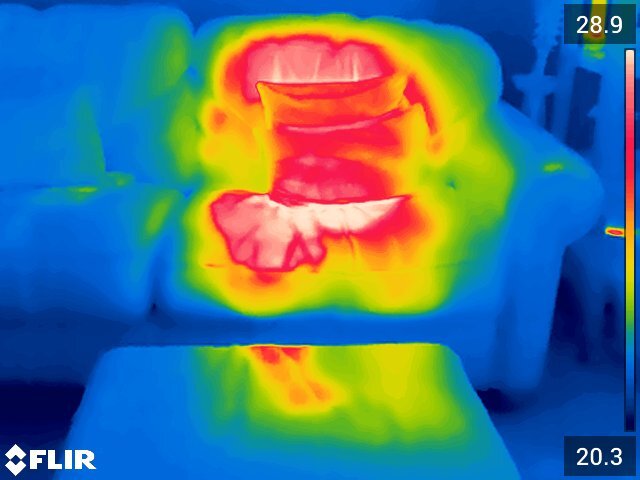What if we had thermal vision?
If you had built-in thermal vision through your eyes, what would you use it for?
As humans, our vision works through a pretty basic principle; if an object produces or reflects light. If an object neither produces or reflects light, then it is simply invisible to us.
However, every object on earth reflects light it is just that not all light produced by objects can be seen by the naked eye. This light is known as infrared.
Diagram of the human eye
Why can’t we see infrared light?
Our eyes are only capable of seeing colours that are included in the rainbow. This is because the light that has shorter or longer wavelengths than those colours doesn’t have to ability to excite the receptors in our eyes, meaning our vision compared to the electromagnetic spectrum is extremely limited. Another contributing factor to a humans inability to see infrared light is that because we are mammals, we produce our own heat from our bodies, stopping us from seeing infrared.
However, some animals have the capability of seeing infrared, this is because they may be cold-blooded. One of the species that have this ability are snakes, they have receptors in their eyes giving them the ability to see in the dark, due to protein channels that come to life when they see the heat coming off their prey. Fish like salmon also can see infrared light, due to an enzyme they acquire that turns their vital systems to activate thermal vision; helping them to hunt for food.
Infrared photo of snake, showing the temperature difference between cold and warm blooded animals
How would thermal vision help us?
Thermal imaging is already used for a wide variety of applications and scenarios so one of the biggest benefits of it being part of our everyday lives is that everything would be a lot safer.
Infrared cameras are already used for identifying faults with machinery and equipment in factories and warehouses; we also know it can be a great tool for homeowners checking for insulation defects and leaks in pipework. With the police already using thermal imaging to help track down criminals or missing people, we have already seen many of the benefits the technology can offer us.
Having thermal visions in our eyes would certainly mean our lives would be a lot safer, we would be able to spot potential hazards in poor conditions such as a cyclist on the road when it’s foggy, this person may be difficult to spot with the naked eye and some car headlights, but with infrared vision we could spot the cyclist in plenty of time for reaction. The same principle is applied if someone broke into your home, you could follow their heat signature to find out where they maybe, if they left and what they touched in the process of you catching them in the act.
Will human thermal vision ever be possible?
In February 2019 a team of scientists carried out an experiment in which they injected some nanoparticles in the subject's eyes, this then gave the subject near-infrared vision for nearly 10 weeks, with very few side effects coming from this.
The nanoparticles the subject was injected with are known as ‘upconversion nanoparticles’ containing rare elements that have the ability to convert low energy photons from near-infrared light, into higher energy that human eyes can see.
At this time the experiment only gives infrared vision for a partial amount of time and only works if the human eyes are flooded with huge amounts of infrared photons; but would you really want to have infrared vision 24/7?
We already know that humans can’t see infrared light due to use being warm-blooded and going off body heat, so if infrared vision was possible it would be very limited as our own body heat would interfere with the view of anything else.
Would it all be worth it?
All though the idea of being able to cheat when playing hide and seek sounds like fun, there is a reason we don’t have infrared vision currently.
With the technology already has allowed us to produce thermal cameras to see infrared light we can pick and choose when we wish to use it. If we had built-in thermal vision we may find it difficult to adjust to life with two perspectives.
Currently, our eyes allow us to see detailed features on people, objects and animals. Thermal imaging takes away all of that and can sometimes make people out to look quite frightening as all you would see is their heat signature.








